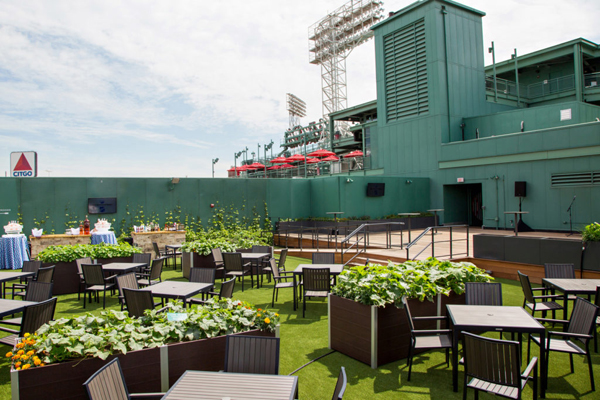
Jeano Deck, Fenway Park, Boston, Massachusetts
It is good to plan. Plans provide a focus and a goal even if they may prove to be unnecessary and overdone. We are currently in a pandemic with no announced food shortages, but rumors swirl of their coming. What a blessing to be provided three growing seasons before the expected part-two of this pandemic arrives in the fall.
It’s time to plant and learn food storage techniques. One never knows what the worldly future holds. I have been spending time both researching and perusing what creative thinkers are doing to produce food locally.
Did you know that there is a 37,000-square-foot underground farm in Paris that grows vegetables and mushrooms? Alaska has been trying underground gardening for awhile. Both are delving into locally sourced food.
Permaculture is the word used for patterns and principles that mimic nature and non-altered food ecosystems. It embraces natural balance rather than actions imposed for a desired result. Its goal is to be a permanent agricultural system which embraces perennial plants and minimal tilling. Permaculture includes food production, wildlife habitat, air quality improvement and carbon absorption. As it is a broad topic, you will find various approaches to the overall goal.
Have you heard of a food forest? Cities such as Boston and Seattle have these green spaces that provide food for humans, living space for wild animals and a gathering spot for the community. Using the concept of a multi-layered growing environment like a natural forest, the food forest has vines like hops and grapes cultivated on tall arbors. Underneath are tables and benches. Low-lying bushes like blueberries and small fruit trees are grouped together with walking paths between.
On the same idea of sharing space and being multi-purposed with land usage is the practice of silvopasture. It is defined as the practice of integrating trees, forage plants and domesticated grazing herds. It is a managed practice for simultaneous production and differs from unmanaged woodland grazing. It is compatible with fruit, nut and timber production. Woodlands do help the grazing animals in minimizing climate discomfort from blazing sun and excessive wind (cost savings).
Another impact is on environmental control. From the US Forest Service, carbon sequestration is defined as “the process by which atmospheric carbon dioxide is taken up by trees, grasses, and other plants through photosynthesis and stored as carbon in biomass [trunks, branches, foliage, and roots] and soils.”
In 2019 an article appeared in greenbiz.com entitled, “How Regenerative Land and Livestock Management Practices Can Sequester Carbon.” The article highlights the impact of White Oak Pastures in Bluffton, Georgia, and the gradual changes to grazing methods made by the owner over 25 years. The end product is a high quality, grass-fed beef herd sold to General Mills’ Epic Provisions.
The 3,000-acre ranch is a multi-species operation.
“The cows graze the grass, the sheep and goats prefer the weeds, and the poultry peck at the roots, bugs and grubs. Through this kind of rotation, the pastures are grazed and fertilized in three ways. This combination of rotational grazing with other regenerative practices such as composting and maintaining perennial pastures has rejuvenated his.”
There has been media attention focused on cattle production as a major contributor to climate change. Independent studies have determined the greenhouse gas footprint of the ranch. The carbon sequestration is three times higher than traditional ranching methods. So, the carbon impact is directly related to how the animals are raised and processed. The lesson learned from this big ranch can be applied on a much smaller scale. A recognized resource is the Savory Institute holistic methods of farming and ranching.

I was on a tour of a major league baseball park, on the way to sit in the seats of the famed Green Monster, when the tour went through the rooftop vegetable garden that sourced the high-end restaurants inside the facility. The extra produce was gifted to the local shelters and kitchens for the destitute. The gardens were raised beds with an irrigation system. The plants were abundant with edibles.
In Germany, Benedikt Gross has led the way in “precision farming.” Using algorithmic models, he designs patterns to plant various crops in complex patterns for the end result of ecological resilience and diversity. This creates healthier crops with minimum chemical use and the production of biogas, a renewable energy source.
Paul Stamets is one of many studying the potential of mushrooms and fungus. Mushrooms are the fruiting body of the fungus, most of which is subterranean and can be recognized by its network of white thread like strands called mycilium. More and more human attention is on the power of mushrooms as they prove their ability to clean up the environment after humans. Studies are tracking the building and replenishing the immune system of humans. Sun is not needed for a great crop of mushrooms. If there is an apocalypse, being a mushroom farmer would have some advantages.
Don’t have much space? Check out microgreens and container gardening. Both can be done inside, with or without grow lights. What about hydroponics?
Families and community groups can include children in the efforts to grow food. These groups can help provide an education not only in where food comes from but also allows for many research topics.
Right now, we need to be outside in our gardens. I just put in an herbal garden and have been looking into the medicinal folklore of herbs that may come in handy. I am planting heirloom vegetables so the seeds can be collected in the fall. I am hoping to produce enough this season to learn how to do canning.
May you all be productive.













